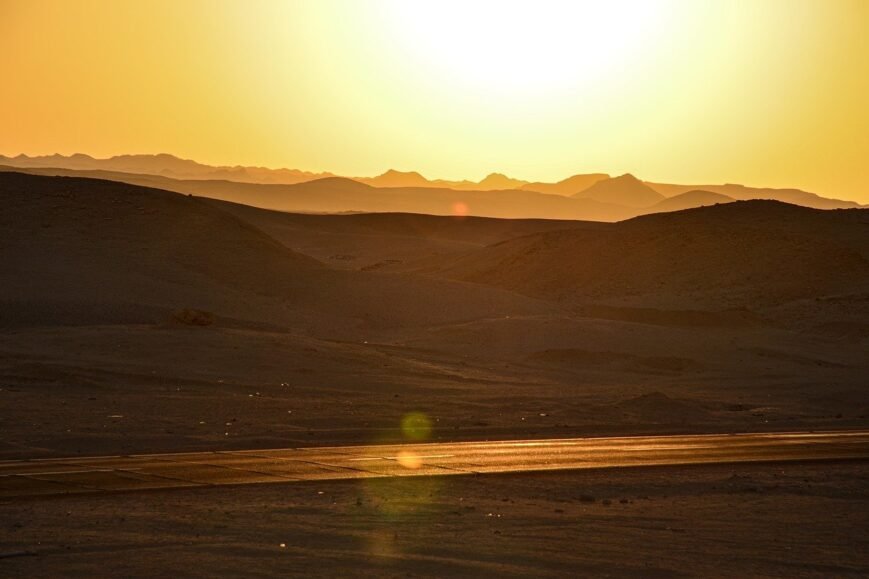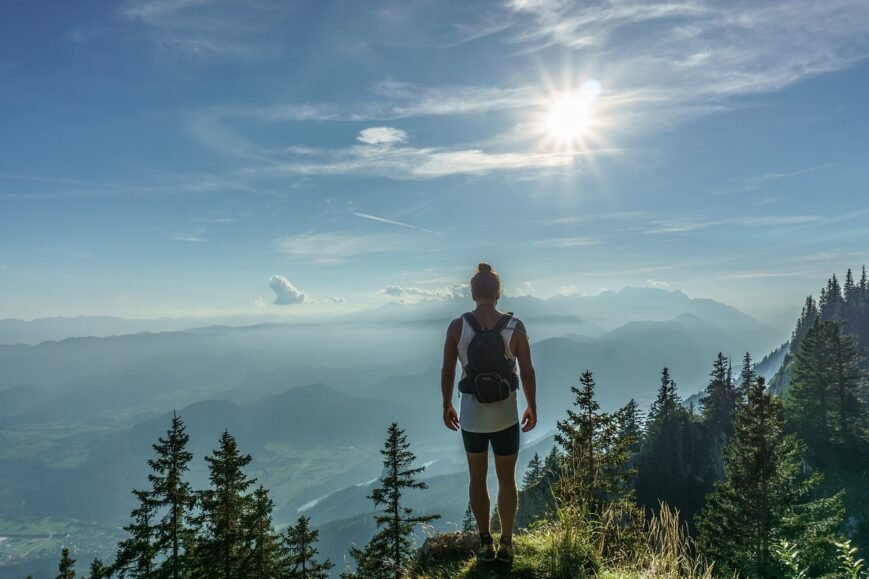Heat stroke is a serious and potentially life-threatening condition that can occur when your body overheats. It is crucial to understand its causes, symptoms, treatment, and prevention to ensure your safety and well-being, especially during hot weather or intense physical activity. We are going to delve into the essential aspects of heat stroke, providing information that could come in handy while you’re out on your summer treks.
What is Heat Stroke?
Heat stroke, also known as sunstroke, is a severe heat-related illness that occurs when the body’s temperature regulation system fails, and the body temperature rises to dangerous levels, typically above 104°F (40°C). Unlike heat exhaustion, which is a milder form of heat-related illness, heat stroke requires immediate medical attention as it can cause damage to vital organs and even be fatal if not treated promptly.
How Do You Get Heat Stroke?
Heat stroke can occur due to various factors, including:
- Prolonged Exposure to High Temperatures: Spending extended periods in hot environments, especially without adequate hydration, can lead to heat stroke.
- Strenuous Physical Activity: Engaging in intense physical activities, such as running or hiking, in hot and humid conditions can increase the risk.
- Dehydration: Inadequate fluid intake can impair the body’s ability to regulate temperature, making it more susceptible to heat stroke.
- Lack of Acclimatization: Sudden exposure to high temperatures without allowing the body to acclimatize can greatly increase the risk.
- Certain Medical Conditions and Medications: Some medical conditions, such as heart disease or obesity, and medications that affect the body’s ability to regulate temperature can increase the risk.
What Are the Signs of Heat Stroke?
Recognizing the signs of heat stroke is crucial for timely intervention. Common symptoms include:
- High Body Temperature: A core body temperature of 104°F (40°C) or higher is a key indicator.
- Altered Mental State: Confusion, agitation, slurred speech, irritability, delirium, seizures, and even coma can occur.
- Hot, Dry Skin: Unlike heat exhaustion, where the skin may be moist, heat stroke often causes hot and dry skin due to the failure of the body’s sweating mechanism.
- Rapid Heartbeat: An increased heart rate as the body tries to cool itself.
- Nausea and Vomiting: Feeling nauseous or vomiting can be a sign of heat stroke.
- Headache: A throbbing headache is a common symptom.
- Dizziness and Fainting: Feeling lightheaded or fainting can occur.
How to Treat Heat Stroke?
Immediate medical attention is essential for treating heat stroke. While waiting for professional help, take the following steps to cool the affected person:
- Move to a Cooler Environment: Get the person out of the sun and into a shaded or air-conditioned area.
- Cool the Body: Use any available means to cool the person’s body. This can include:
- Spraying or sponging the person with cool water.
- Placing ice packs or cold, wet towels on the person’s neck, armpits, and groin.
- Immersing the person in a cool bath or shower.
- Hydrate: If the person is conscious and able to swallow, provide cool water or an electrolyte solution. Avoid sugary or alcoholic beverages.
- Monitor Vital Signs: Keep a close watch on the person’s breathing, pulse, and level of consciousness until medical help arrives.
How to Prevent Heat Stroke?
Preventing heat stroke involves taking proactive measures to stay cool and hydrated, especially during hot weather or physical activities. Here are some key prevention tips:
- Stay Hydrated: Drink plenty of fluids, especially water, throughout the day. Avoid caffeinated and alcoholic beverages as they can contribute to dehydration.
- Dress Appropriately: Wear lightweight, loose-fitting, and light-colored clothing to reflect heat and allow sweat to evaporate.
- Use Sun Protection: Apply sunscreen with a high SPF, wear a wide-brimmed hat, and use sunglasses to protect yourself from the sun’s harmful rays.
- Take Breaks: If engaging in physical activities, take frequent breaks in shaded or cool areas to allow your body to cool down.
- Avoid Peak Heat Hours: Plan outdoor activities during the cooler parts of the day, such as early morning or late evening.
- Acclimatize Gradually: Allow your body to gradually adjust to higher temperatures by slowly increasing your exposure to heat over several days.
- Be Aware of Medical Conditions: If you have a medical condition that affects your body’s ability to regulate temperature, such as heart disease, diabetes, or obesity, take extra precautions. Consult with your healthcare provider for personalized advice on preventing heat stroke.
- Monitor Medication Side Effects: Some medications can impair your body’s ability to stay hydrated and regulate temperature. Be aware of the side effects of any medications you are taking and discuss them with your doctor.
- Stay Informed: Keep an eye on weather forecasts and heat advisories. Knowing when extreme heat is expected can help you plan your activities accordingly.
- Create a Cool Environment: Use fans, air conditioning, or cool showers to lower your body temperature. If you don’t have air conditioning at home, consider spending time in public places that do, such as shopping malls or libraries.
- Educate Others: Spread awareness about the risks of heat stroke and the importance of prevention measures. Educating friends, family, and community members can help protect everyone during hot weather.
Conclusion
Heat stroke is a serious condition that requires immediate attention and proactive prevention. By understanding what it is, how it occurs, recognizing its symptoms, and knowing how to treat and prevent it, you can protect yourself and others from its potentially life-threatening effects.
Stay hydrated, dress appropriately, use sun protection, take breaks, avoid peak heat hours, acclimatize gradually, and be aware of any medical conditions or medications that may increase your risk. With these precautions, you can enjoy the summer safely and reduce the risk.
Frequently Asked Questions
Q. What is the difference between heat exhaustion and heat stroke?
Heat exhaustion is a milder form of heat-related illness that can develop after several days of exposure to high temperatures and inadequate fluid intake. Symptoms include heavy sweating, weakness, dizziness, nausea, and headache. Heat stroke, on the other hand, is a severe and life-threatening condition characterized by a body temperature above 104°F (40°C), altered mental state, and hot, dry skin.
Q. Can heat stroke occur indoors?
Yes, heat stroke can occur indoors, especially in environments without adequate ventilation or air conditioning. High indoor temperatures combined with strenuous activities or lack of hydration can lead to heat stroke.
Q. How long does it take to recover from heat stroke?
Recovery from heat stroke can vary depending on the severity of the condition and how quickly treatment is administered. It may take several days to weeks for a full recovery. In severe cases, long-term complications such as organ damage can occur.
Q. Who is most at risk for heat stroke?
Individuals most at risk include the elderly, young children, people with chronic medical conditions, athletes, outdoor workers, and those taking medications that affect the body’s ability to regulate temperature.
Q. What should I do if I suspect someone has heat stroke?
If you suspect someone has heat stroke, call emergency services immediately. While waiting for help, move the person to a cooler environment, cool their body with water, ice packs, or cold towels, and provide hydration if they are conscious and able to swallow.
By following these guidelines and staying informed, you can effectively prevent and respond to heat stroke, ensuring the safety and well-being of yourself and those around you.
References
- Centers for Disease Control and Prevention (CDC). (2022). Heat Stress. Retrieved from https://www.cdc.gov/niosh/topics/heatstress/
- Mayo Clinic. (2021). Heat Stroke. Retrieved from [https://www.mayoclinic.org/diseases-conditions/heat-stroke/symptoms-causes/syc-203
![]()


